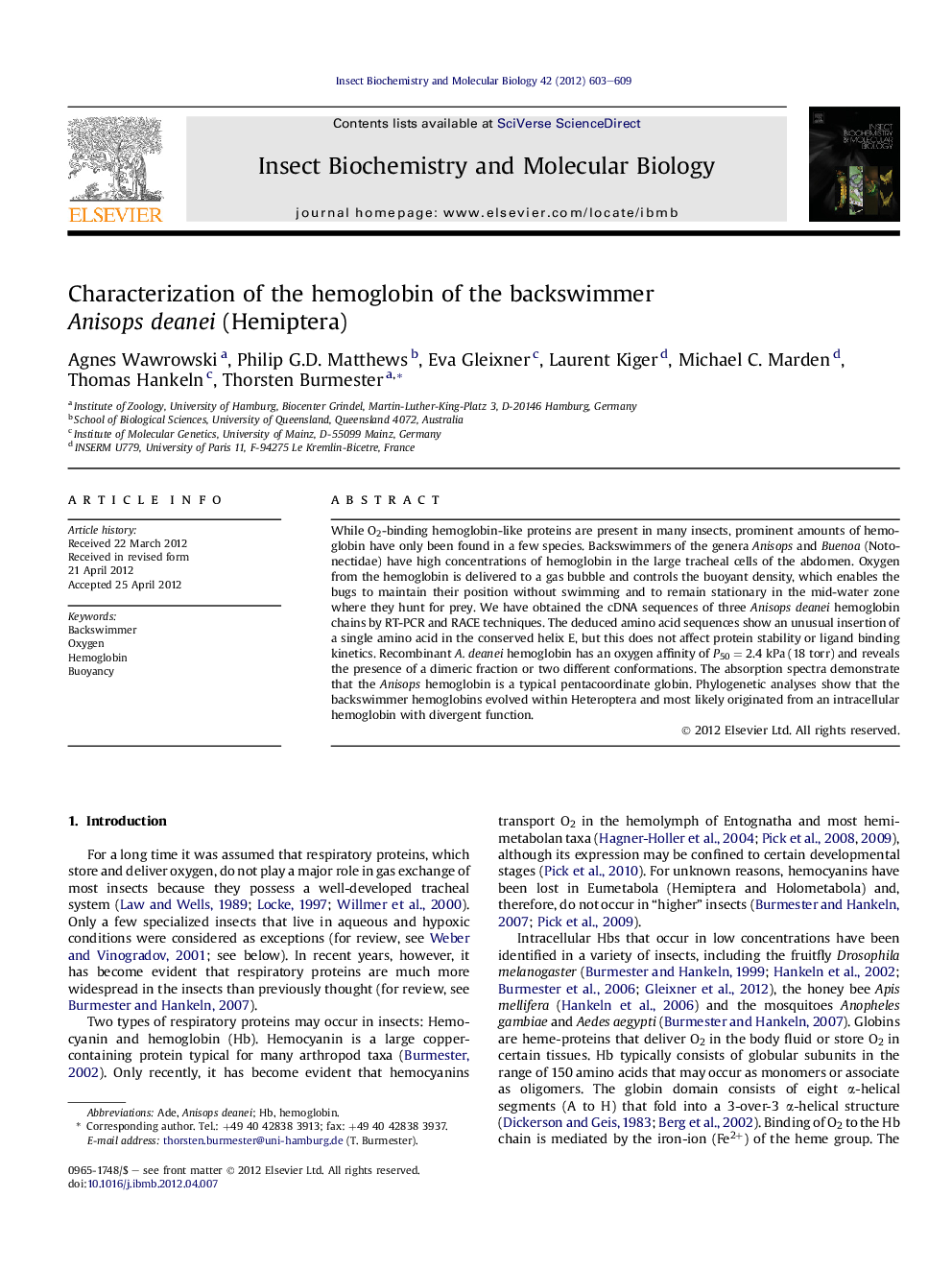| Article ID | Journal | Published Year | Pages | File Type |
|---|---|---|---|---|
| 1982323 | Insect Biochemistry and Molecular Biology | 2012 | 7 Pages |
While O2-binding hemoglobin-like proteins are present in many insects, prominent amounts of hemoglobin have only been found in a few species. Backswimmers of the genera Anisops and Buenoa (Notonectidae) have high concentrations of hemoglobin in the large tracheal cells of the abdomen. Oxygen from the hemoglobin is delivered to a gas bubble and controls the buoyant density, which enables the bugs to maintain their position without swimming and to remain stationary in the mid-water zone where they hunt for prey. We have obtained the cDNA sequences of three Anisops deanei hemoglobin chains by RT-PCR and RACE techniques. The deduced amino acid sequences show an unusual insertion of a single amino acid in the conserved helix E, but this does not affect protein stability or ligand binding kinetics. Recombinant A. deanei hemoglobin has an oxygen affinity of P50 = 2.4 kPa (18 torr) and reveals the presence of a dimeric fraction or two different conformations. The absorption spectra demonstrate that the Anisops hemoglobin is a typical pentacoordinate globin. Phylogenetic analyses show that the backswimmer hemoglobins evolved within Heteroptera and most likely originated from an intracellular hemoglobin with divergent function.
Graphical abstractFigure optionsDownload full-size imageDownload high-quality image (119 K)Download as PowerPoint slideHighlights► Some backswimmers use hemoglobin to store oxygen for buoyancy control. ► We cloned, sequenced and characterized the hemoglobin of Anisops deanei. ► A. deanei hemoglobin has a unique amino acid insertion in helix E. ► Recombinant A. deanei hemoglobin is a monomer with P50 = 2.4 kPa (18 torr). ► Backswimmer hemoglobins evolved within Heteroptera from an intracellular ancestor.
